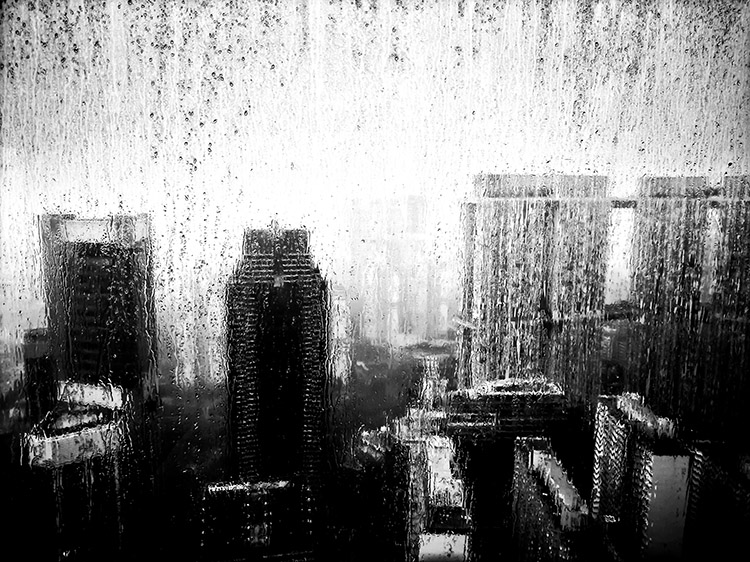Singapore
January 5, 2018
In Anthropocene Asia-Pacific, climate change is driving environmental instabilities such as floods, droughts, typhoons and heat waves that pose fundamental questions on human settlements and planetary health. The basic facets of human life such as livelihoods, food security, urban infrastructure and health have become deeply impacted, creating interconnected and multidimensional challenges.
The island state of Singapore is no different in its susceptibility to climate crises. Given its inimitable geospatial condition, it faces the following known direct impacts of climate change.

Photo courtesy of Atelier Dreiseitl
Sea Level Rise
Approximately 70 per cent of the land area lies between 5 and 15 metres above mean sea level (MSL) only. During the period from 1975 to 2009 (57.8 millimetres in 34 years), the Straits of Singapore has witnessed a MSL rise at the rate of 1.2 to 1.7 millimetres per year. Significantly, there is a strong seasonal cycle in extreme sea levels with an increase by typically 30 centimetres during the northeast monsoon seasons (November to February) and lower by around 20 centimetres during the southwest monsoon seasons (June to August). A further increase in sea levels of up to 5 centimetres occurs in this region during La Niña events while a lowering by around the same amount occurs during El Niño. Although its location at 1.35 degrees north of the equator lies outside the tropical cyclone genesisregion, there have been rare occurrences of severe tropical systems such as typhoon Vamei (in 2001) that could produce sea levels around Singapore’s coast in the range of 2 to 2.8 metres, adding further inundation risks to the island’s shallow coastline (Jones et al., 2015).
Temperature Rise
From 1972 to 2014, the annual mean temperature has increased from 26.6 degrees Celsius to 27.7 degrees Celsius. For the period of 2070 to 2099, the National Climate Change Study (2015) projects that average surface temperatures across Singapore will increase by 1.4 to 2.7 degrees Celsius under the RCP4.5 greenhouse gas trajectory and by 2.9 to 4.6 degrees Celsius for RCP8.5. These projected changes in temperature will be felt through a significant increase in the number of warm days (with a maximum temperature of 34.1 degrees Celsius or above) and nights (with a minimum temperature of 26.2 degrees Celsius or above) per season over the 21st century (Jones et al., 2015).
Erratic Rainfall
There has been a general uptrend in annual average rainfall from 2,192 millimetres in 1980 to 2,727 millimetres in 2014. The National Climate Change Study (2015) asserts an increased contrast between the wet and dry months by the end of the century with an upward trend in seasonal mean rainfall during the wet season (November to January)
and an equally coherent signal of dry spells during June to September and February. Aside from direct impacts, the nature and scale of the complexity of climate change effects are felt by the numerous indirect impacts they cause, especially within the urban environments.
Flooding
Coastal systems and low-lying areas are the most vulnerable to sea-level rise with risks of inundation and erosion, further elevating coastal sea levels above normal tidal levels. This could decrease the rate at which urban run-off drains into the oceans via rivers, canals or streams, causing backwater effects and enhanced upstream flooding. The urbanised landscape, combined with increased annual rainfall (exceeding 2,370 millimetres), strains the drainage channels especially during the northeast monsoon (November to February) and have led to flash floods in some instances.
Ocean Warming & Acidification
Ocean temperature rise and acidification due to global warming have proved lethal to the proliferation of coral reefs that support substantial marine biodiversity. By this means, hard coral reefs (Cyrene Reef) found along southwest Singapore are experiencing a slow growth rate, unable to keep pace with the rising sea levels.
Natural Processes & Health
Haze
Food Security
Energy & Emissions
Solutions
To read the complete article, get your hardcopy at our online shop/newsstands/major bookstores; subscribe to FuturArc or download the FuturArc App to read the issues.
Previously Published City Profile
Contact us at https://www.futurarc.com/contact-us for older commentaries.


